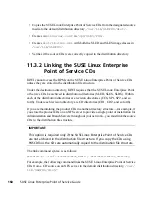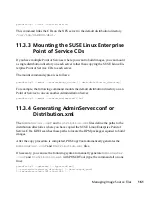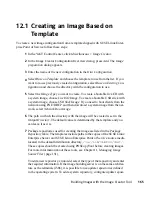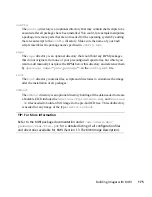
13
Building Images with KIWI
KIWI is a full-blown imaging suite that allows you to configure, build and deploy your
own operating system images. The KIWI workflow is divided into three distinct stages:
Preparing the Image Configuration (Physical Extend)
Determine which packages are installed on your image and which configuration
files are included with the image. Create a directory holding the contents of the
new file system from a software package source such as SUSE Linux Enterprise
Server and create an image description file, (
config.xml
). The resulting infras-
tructure is referred to as the physical extend. For a detailed description of the image
configuration procedure, refer to Section 13.2, “Preparing the Image Configuration”
(page 178).
Creating the Image (Logical Extend)
The image itself is created using the data gathered in the physical extend. The re-
sulting image is called logical extend. The image creation process does not require
user interaction, but can be fine-tuned by modifying the
images.sh
script that
is called during the creation process. For a detailed description of the image creation
procedure, refer to Section 13.3, “Creating the KIWI Image” (page 180).
Deploying the Image
The final image can be deployed using various different methods. SUSE Linux
Enterprise Point of Service supports PXE net boot, live system images and USB
stick images.
Building Images with KIWI
173
















































